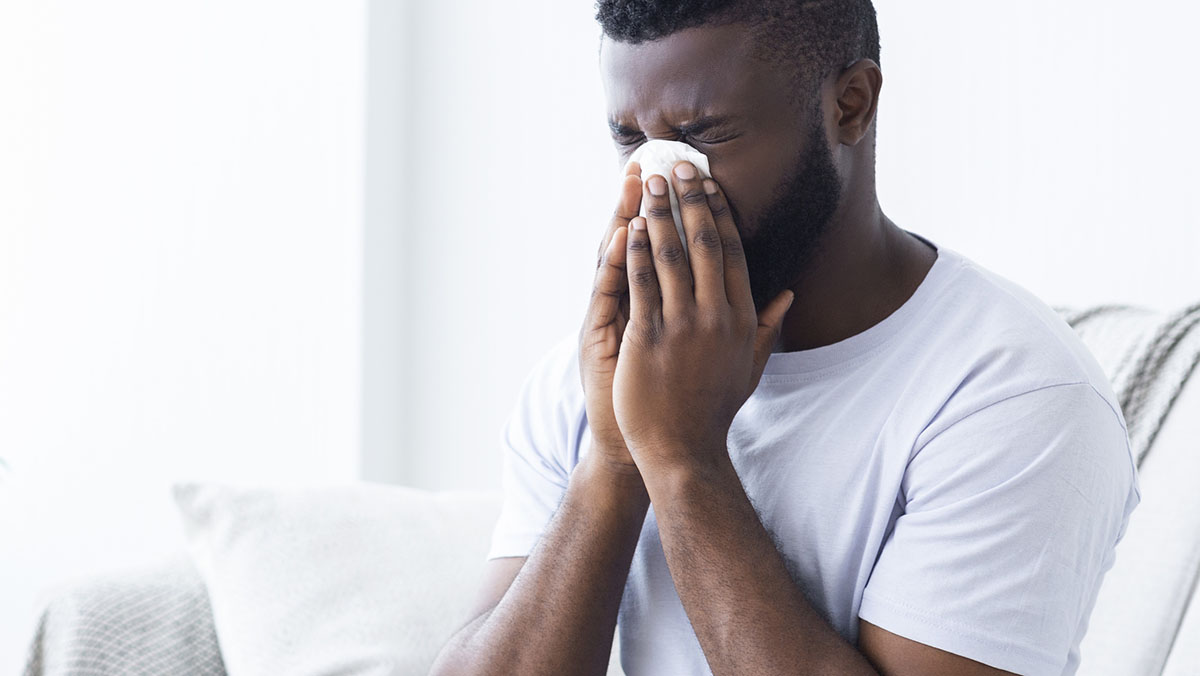Veterans suffer from numerous medical disabilities at proportions much higher than their civilian counterparts. Some of these conditions may be more overt while others may go unnoticed by the general public. Still, these less noticeable conditions can have negative effects on the sufferer. One such condition is allergic rhinitis which affects roughly 10% to 30% of the adult population in the United States.
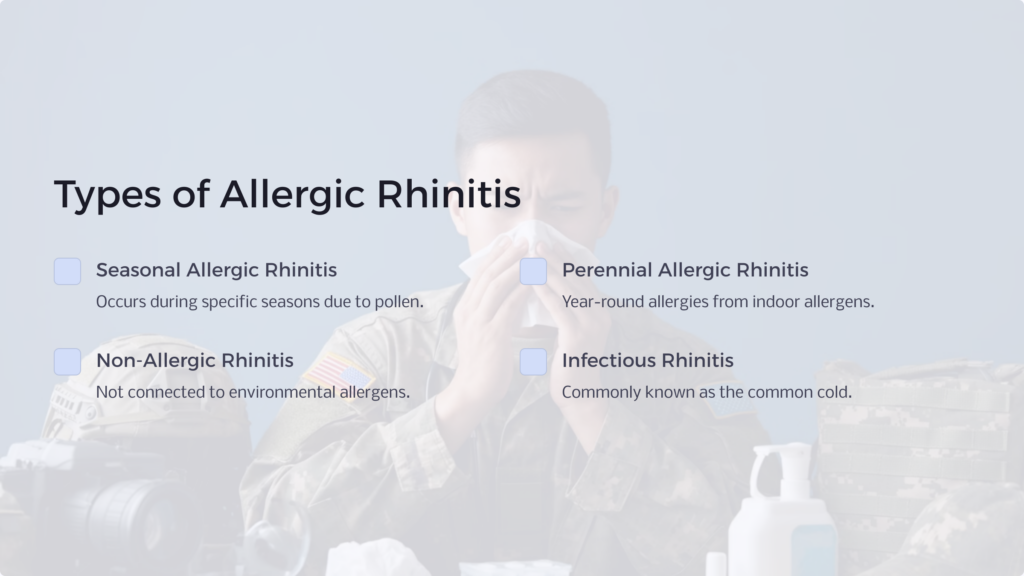
4 Types of Allergic Rhinitis
- Seasonal allergic rhinitis
- Perennial allergic rhinitis
- Non-allergic rhinitis
- Infectious rhinitis
Military service members make great sacrifices when they enter the military. When these same veterans return home, they all too often bring with them medical conditions that can drastically affect their ability to work or perform daily functions. To help address this, the Department of Veterans Affairs (VA) provides disability compensation to those who can show their condition is connected to their time in the service.
What Is Allergic Rhinitis?
Allergic Rhinitis (what many commonly call allergies) is a reaction, usually in the nose and nasal cavity, to certain allergens in the environment. Rhinitis means “inflammation of the inner lining of the nose,” but allergic rhinitis symptoms can also include itchy or watery eyes, stuffy or runny nose, sneezing, or excessive mucus that runs down your throat.
Rhinitis can be caused by natural environmental factors like pollen, common household irritants like dust or animal dander, physiological factors like hormones or defects like a deviated septum, or by manmade toxic exposure like second-hand smoke, smog, or chemicals.
Most types of rhinitis only last a short time when an allergen is present. While the symptoms may recur every year around the same time, they generally do not last long and are therefore not considered a chronic condition. However, some may suffer from conditions such as vasomotor rhinitis where symptoms last longer than 12 weeks. The good news is that both chronic and non-chronic rhinitis often have effective treatment options that can reduce or even eliminate symptoms.
4 Types of Allergic Rhinitis
Seasonal Allergic Rhinitis
Seasonal allergic rhinitis (SAR) is one of the most well-known types and is sometimes referred to as hay fever, though this is a bit of a misnomer. SAR occurs when someone has an allergic reaction to environmental substances like grass, seed, or tree pollen. The term “hay fever” is used because hay can also cause the same reaction since it’s a type of grass, but there is often no fever associated.
This type of allergic rhinitis mostly occurs in the spring and fall when pollen levels are at their highest. Those who are sensitive to seasonal allergies will typically suffer from symptoms for two to three weeks, or until the allergen that’s causing a reaction has subsided.
Perennial Allergic Rhinitis
Unlike seasonal allergies, perennial allergic rhinitis occurs year-round and is caused by allergens mostly found in indoor environments like dust mites, animal dander, or mold. Though the symptoms of perennial allergic rhinitis may grow weaker or stronger, they are generally always present.
Those who suffer from these types of allergies also often suffer from asthma or other conditions like learning disabilities, sleep disorders, fatigue, Eustachian tube dysfunction, or allergic conjunctivitis. If left untreated, perennial allergic rhinitis can also lead to chronic sinusitis or can cause the growth of a nasal polyp. Nasal polyps are known to cause further complications with breathing and can worsen conditions like sleep apnea.
Non-Allergic Rhinitis
As the name implies, this type of rhinitis is not connected to environmental allergens like pollen, dust, or dander. Non-allergic rhinitis causes similar symptoms though usually with fewer instances of itchy nose or eyes. Instead, symptoms are typically a cough, runny or stuffy nose, sneezing, or mucus in the throat.
While the causes of allergic rhinitis are easier to identify, the causes of non-allergic rhinitis are not always known. In some cases, it could be that the sufferer’s nerve endings in the nose are overly responsive and therefore react more extremely to stimulus.
Some other causes are thought to be smog, second-hand smoke, perfumes, temperature or humidity changes, food allergies, certain medications, hormonal changes especially during pregnancy, acid reflux, or sleep apnea. This type of rhinitis is also much more common in adults than it is in children, occurring predominantly in people over the age of 20.
Infectious Rhinitis
Infectious rhinitis (also called viral rhinitis) is what most people would refer to as the common cold, and is the most familiar kind of rhinitis affecting everyone regardless of their propensity for non-viral rhinitis. This type of rhinitis is caused when a virus enters the sinus cavities and nasal passages and results in an infection. The symptoms are very similar to allergen-induced rhinitis and many sufferers (especially those with seasonal allergies) may not be able to tell if they have a cold or a reaction to a seasonal allergen. The common cold can occur any time of year, doesn’t last as long, and usually won’t cause itchy or watery eyes. Seasonal rhinitis, on the other hand, occurs around the same time every year and will typically last two to three weeks.
Common Causes of Allergic Rhinitis
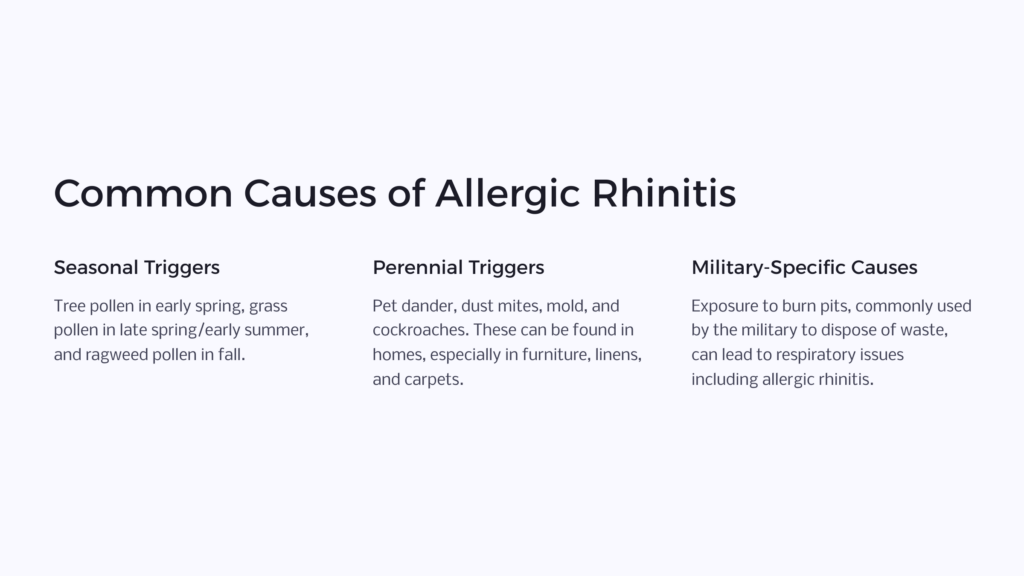
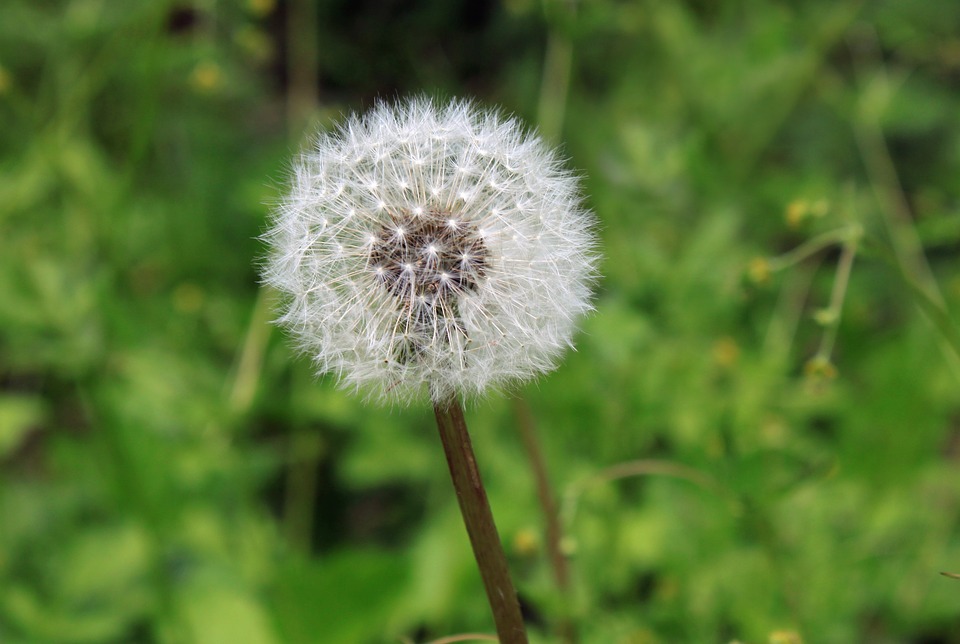
Allergic rhinitis is caused by both environmental irritants and allergens. The causes of seasonal allergic rhinitis depend on the time of year and where you’re located. In the early spring, the most common cause is tree pollen, and in late spring and early summer, you’re more likely to see grass pollen as a cause. In the fall, ragweed pollen is the most likely culprit though this is more commonly found in the Midwest and eastern parts of the United States.
Perennial allergic rhinitis can be more difficult to treat since it’s not always clear what causes it. Even if you can locate the cause, it is often hard to avoid it or eliminate it. Common causes are cat and pet dander, dust motes, mold or fungus, or cockroaches. These particles can live in our homes and especially in furniture, linens, carpets, and clothing so these should be washed as frequently as possible with hot water to mitigate their effects. Carpets should be vacuumed using an allergy filter.
Another common cause of allergic rhinitis and other respiratory system issues for veterans is prior exposure to burn pits which are frequently used by the military to dispose of waste.
Can Allergic Rhinitis Cause Sleep Apnea?
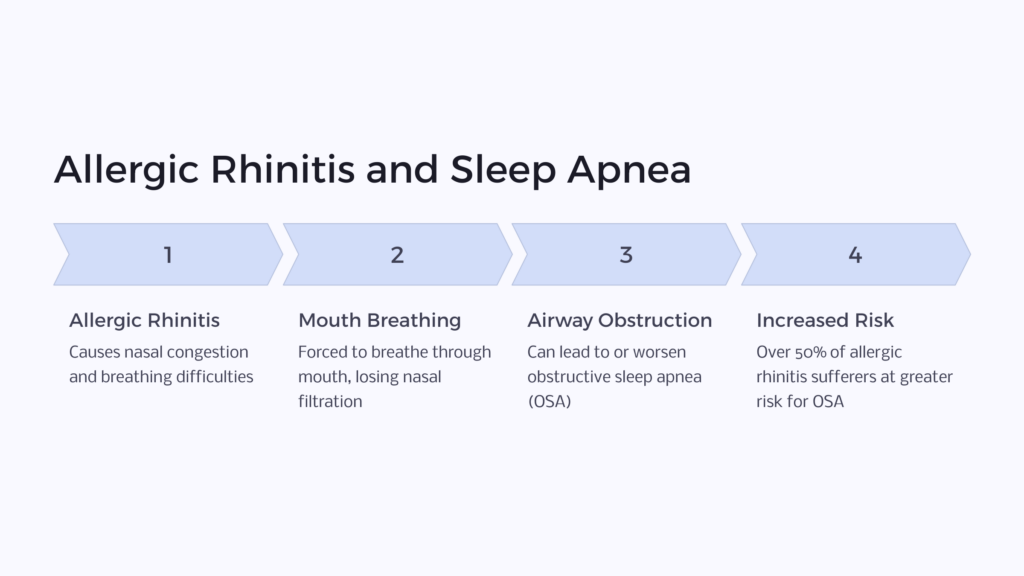
One of the more serious effects of allergic rhinitis is when it causes or exacerbates sleep apnea (also called obstructive sleep apnea). An apnea is any time your breathing stops for a few seconds up to a minute, resulting in reduced oxygen intake. Obstructive sleep apnea (OSA) occurs when the airway becomes obstructed resulting in difficulty sleeping and snoring, but can lead to more serious conditions like heart disease, stroke, diabetes, and high blood pressure.
Since allergies can result in a stuffy nose they can force you to breathe out of your mouth, thus losing the natural filtration that breathing through your nose brings and this can worsen symptoms of OSA.
Allergens have been known to cause up to 60% of breathing disruptions due to nasal congestion and this can cause or exacerbate sleep apnea. In fact, over 50% of people who suffer from allergic rhinitis are at a greater risk for OSA. Veterans with service-connected allergic rhinitis caused by airborne toxins may also develop sleep apnea as a secondary condition and qualify for additional disability benefits.
If sleep apnea is caused by a veteran’s service-connected allergic rhinitis, it may qualify as a secondary condition that can increase a veteran’s monthly disability benefits.
VA Disability Rating for Allergic Rhinitis
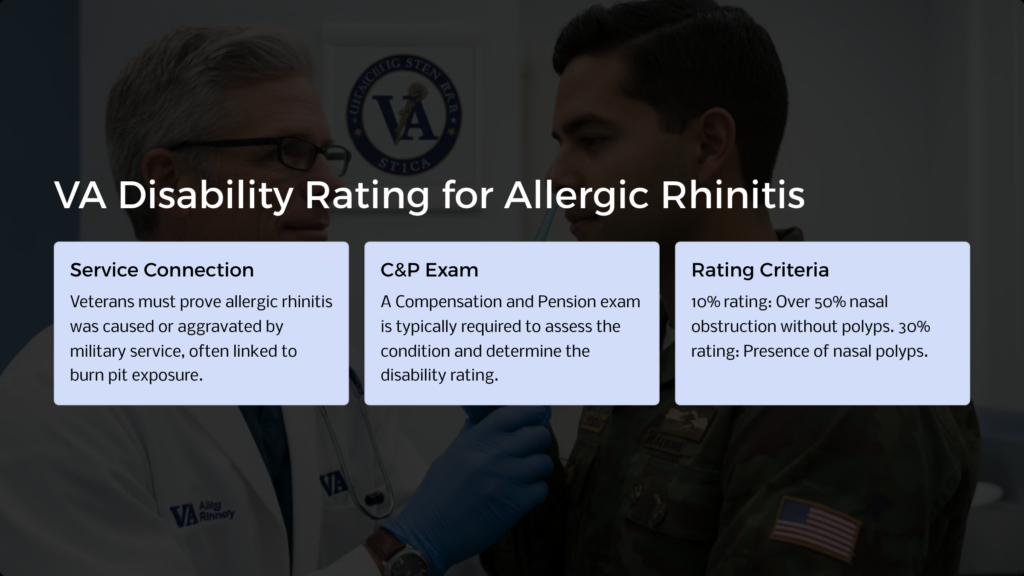
Veterans may qualify for VA disability compensation for allergic rhinitis if they can prove a service connection. This means proving that the rhinitis was either caused or aggravated by military service.
While this can occur for any veteran, it is commonly seen in those who experienced burn pit exposure. The toxic exposure caused by these pits can result in respiratory conditions as well as long-term lung conditions. If you know you were exposed to one of these burn pits and have since experienced a respiratory system condition or allergic rhinitis, you can likely show a service connection and get compensation.
When you file a VA claim, you’ll likely be asked to undergo a Compensation and Pension exam (C&P exam) to obtain a VA disability rating. This will be performed by a VA physician or VA-approved provider. In this examination, your provider will review your past service and medical records. You will likely undergo a physical exam and be asked questions about your condition.
You may receive a VA rating for your disability. For allergic rhinitis, this is usually either a 10% or 30% rating. Your rating determines how much in monthly disability compensation you’ll receive. A 10% rating is for veterans without polyps but who still have over 50% obstruction of the nasal cavity. A 30% rating is reserved for those suffering from allergic rhinitis who also have nasal polyps.
Those who were exposed to a burn pit or other airborne toxins, especially if they were stationed in the Middle East, may now be able to qualify for expedited VA disability insurance. In August 2021, the VA announced it will start processing disability claims for rhinitis, sinusitis, or asthma on a presumptive basis due to presumed particulate matter exposures.
This new process is available to those who were on active duty in Southwest Asia beginning Aug. 2, 1990, and up to the present, or those who served in Afghanistan, Uzbekistan, Syria, or Djibouti anytime from Sept. 19, 2001, to the present.
Sleep Apnea as a Secondary Disability
Additionally, you may also be able to qualify for a VA disability claim for sleep apnea since it’s a secondary condition that can be caused by allergic rhinitis. However, there are different criteria you’ll need to meet to get VA benefits for sleep apnea. First, you must have an official diagnosis after being involved in a sleep study. Second, you must show a service connection to your condition. And third, you must show that your sleep apnea began or worsened during your service time. The VA will then rate your sleep apnea at either 0%, 30%, 50%, or 100%.
Disability Benefits for Allergic Rhinitis
Allergic rhinitis and the conditions it can cause or exacerbate like chronic asthma and sleep apnea can have significant effects on daily life.
If you’ve experienced any form of rhinitis that you believe is connected to your time serving in the armed forces, you should file a claim for disability benefits. However, since it can be difficult to obtain a VA rating and show the required evidence, you should ensure you meet all the requirements before applying. You can do this by connecting with your doctor or 3rd party medical evidence development company to gather the necessary documentation.
 Benefits.com Advisors
Benefits.com Advisors
With expertise spanning local, state, and federal benefit programs, our team is dedicated to guiding individuals towards the perfect program tailored to their unique circumstances.
Rise to the top with Peak Benefits!
Join our Peak Benefits Newsletter for the latest news, resources, and offers on all things government benefits.















